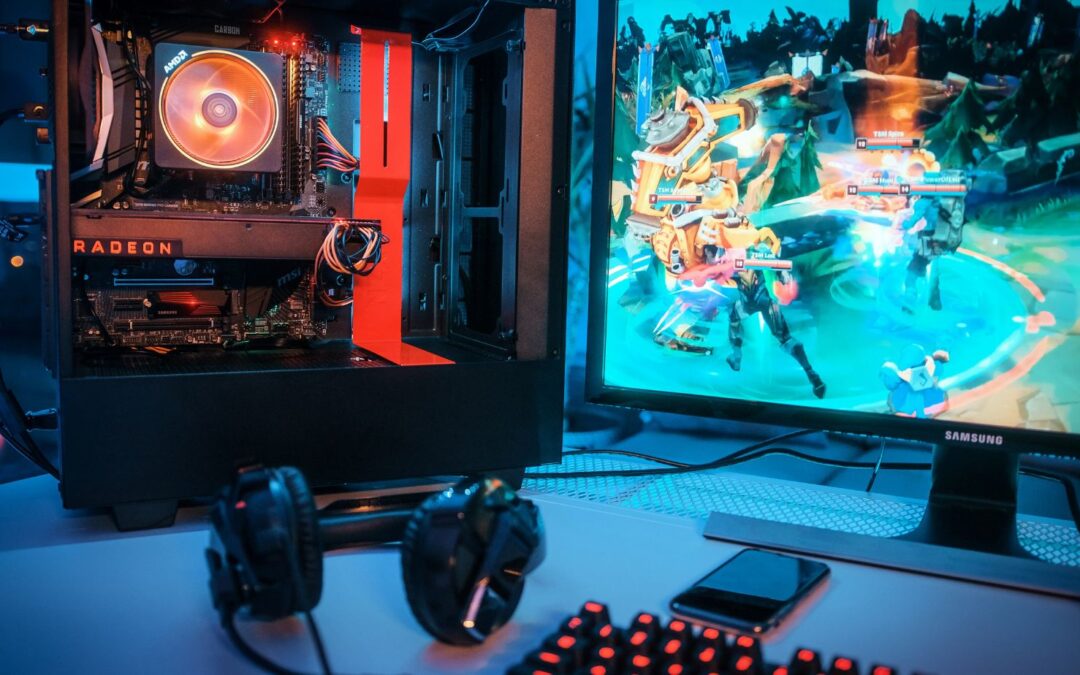When we look at a video game, we often appreciate the graphics and the work that went into creating them. However, many of us don’t think of those graphics as being works of art. However, that’s exactly what we’re looking at. Digital art has become a big part of modern game development, and it’s what brings to life everything we see on the screen, making the titles we play immersive visual experiences.
Looking back at early video games, it’s hard to believe how far the gaming world has come, going from simple, pixelated graphics to detailed digital works of art. This digital art is what brings a game’s storytelling to life and keeps players engaged with the titles they’re playing. In this article, we look at the tools and techniques used to create the digital art we see in today’s games.
Evolution of Digital Art in Gaming
If we take a trip back in time to the very beginning of video games, we encounter titles like Pong and Space Invaders that were created using basic pixel art. By today’s standards, these game graphics leave a lot to be desired, but when they were released, they were groundbreaking. Developers couldn’t improve game graphics until the technology advanced, allowing them to do so.

As technology improved, so did video game graphics. When games went from 2D-pixel art to 3D modeling, a whole new world of realism and artistic expression opened up. Modern tools like 3D modeling software and advanced texturing techniques have completely changed the approach to game art, with developers being able to create lifelike characters and immersive worlds that pull players into the gaming experience.
A great deal of gaming takes place online these days, with everything from poker to MMORPG being player favorites. While poker has traditionally been a game played in person, technology has made it possible for online casinos to create realistic experiences in the virtual world. Players have to master many of the same skills for a game of virtual poker as they would for one in real life, including the art of hand reading to understand what cards their opponent might be holding. Graphics aren’t the first thing that comes to mind when a player sits down at the virtual poker table; however, they play a big role in making the experience feel authentic.
Key Aspects of Digital Art in Game Development
There’s a lot that goes into making the digital art that we see in the games we play. What aspects are used will depend on the game in question. For example, puzzle games like Tetris or Candy Crush Saga won’t have much character art because that’s not the game’s focus. However, for games that do involve character design, artists use digital tools to create characters that look realistic and can connect with players on an emotional level. There’s not necessarily a specific look that a character must have to achieve this, and the digital tools artists use give them a lot of flexibility to test what works.

World-building is one of the most important parts of creating a game. All gamers know how impressive it is to explore the detailed environments that are so common in today’s games. These digital landscapes feature different textures and dynamic lighting that are so realistic they can make players feel like they’re in a different world. Most of us enjoy the animations in the games we play, and these are made possible with motion capture technology and digital animation techniques that make the movements of characters fluid and realistic, making in-game actions and interactions feel believable. Then there’s UI/UX design, which uses artistic design to ensure user interfaces are intuitive and engage players in the game’s experience.
Beyond that, game engines play an important part in creating the art we see in games. Applications like Unreal Engine, Blender, and Photoshop are used across the gaming industry, and artists use them to create and refine game assets.











